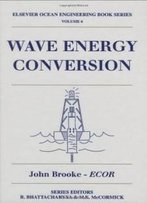
Seismic Design Of Rc Buildings: Theory And Practice (springer Transactions In Civil And Environmental Engineering)
by Sharad Manohar /
2015 / English / PDF
13 MB Download
This book is intended to serve as a textbook for engineering
courses on earthquake resistant design. The book covers important
attributes for seismic design such as material properties,
damping, ductility, stiffness and strength. The subject coverage
commences with simple concepts and proceeds right up to nonlinear
analysis and push-over method for checking building adequacy. The
book also provides an insight into the design of base isolators
highlighting their merits and demerits.
This book is intended to serve as a textbook for engineering
courses on earthquake resistant design. The book covers important
attributes for seismic design such as material properties,
damping, ductility, stiffness and strength. The subject coverage
commences with simple concepts and proceeds right up to nonlinear
analysis and push-over method for checking building adequacy. The
book also provides an insight into the design of base isolators
highlighting their merits and demerits.
Apart from the theoretical approach to design of multi-storey
buildings, the book highlights the care required in practical
design and construction of various building components. It covers
modal analysis in depth including the important missing mass
method of analysis and tension shift in shear walls and beams.
These have important bearing on reinforcement detailing. Detailed
design and construction features are covered for earthquake
resistant design of reinforced concrete as well as confined and
reinforced masonry structures. The book also provides the
methodology for assessment of seismic forces on basement walls
and pile foundations. It provides a practical approach to design
and detailing of soft storeys, short columns, vulnerable
staircases and many other components. The book bridges the gap
between design and construction. Plenty of worked illustrative
examples are provided to aid learning. This book will be of value
to upper undergraduate and graduate students taking courses on
seismic design of structures.
Apart from the theoretical approach to design of multi-storey
buildings, the book highlights the care required in practical
design and construction of various building components. It covers
modal analysis in depth including the important missing mass
method of analysis and tension shift in shear walls and beams.
These have important bearing on reinforcement detailing. Detailed
design and construction features are covered for earthquake
resistant design of reinforced concrete as well as confined and
reinforced masonry structures. The book also provides the
methodology for assessment of seismic forces on basement walls
and pile foundations. It provides a practical approach to design
and detailing of soft storeys, short columns, vulnerable
staircases and many other components. The book bridges the gap
between design and construction. Plenty of worked illustrative
examples are provided to aid learning. This book will be of value
to upper undergraduate and graduate students taking courses on
seismic design of structures.











